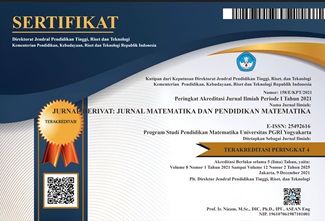Identifikasi Model I-Garch (Integrated Generalized Autoregressive Conditionally Heterocedastic) Untuk Peramalan Value At Risk
DOI:
https://doi.org/10.31316/j.derivat.v3i1.626Abstract
A stock returns data are one of type time series data who has a high volatility and different variance in every point of time. Such data are volatile, seting up a pattern of asymmetrical, having a nonstationary model, and that does not have a constant residual variance (heteroscedasticity). A time series ARCH and GARCH model can explain the heterocedasticity of data, but they are not always able to fully capture the asymmetric property of high frequency. Integrated Generalized Autoregresive Heteroskedascticity (IGARCH) model overcome GARCH weaknesses in capturing unit root. Furthermore IGARCH models were used to estimate the value of VaR as the maximum loss that will be obtained during a certain period at a certain confidence level. The aim of this study was to determine the best forecasting model of Jakarta Composite Index (JSI). The model had used in this study are ARCH, GARCH, and IGARCH. From the case studies were carried out, the result of forecasting volatility of stock index by using IGARCH(1,1) obtained log likelihood values that 3857,979 to the information criteria AIC = -6,3180; BIC = -6,3013; SIC = -6,3180; dan HQIC = -6,3117. Value of VaR movement of the JCI if it becomes greater the investment is Rp.500,000,000.00 with a confidence level of 95% on the date of July 2, 2015 using a model IGARCH (1,1) is Rp7.166.315,00.
Downloads
Published
20-07-2016
Issue
Section
Articles
Citation Check
License
Authors who publish with this journal agree to the following terms:
-
Authors retain copyright and grant the journal right of first publication with the work simultaneously licensed under a Creative Commons Attribution-ShareAlike 4.0 International License that allows others to share the work with an acknowledgment of the work's authorship and initial publication in this journal.
- Authors are able to enter into separate, additional contractual arrangements for the non-exclusive distribution of the journal's published version of the work (e.g., post it to an institutional repository or publish it in a book), with an acknowledgment of its initial publication in this journal.
- Authors are permitted and encouraged to post their work online (e.g., in institutional repositories or on their website) prior to and during the submission process, as it can lead to productive exchanges, as well as earlier and greater citation of published work (See The Effect of Open Access).







